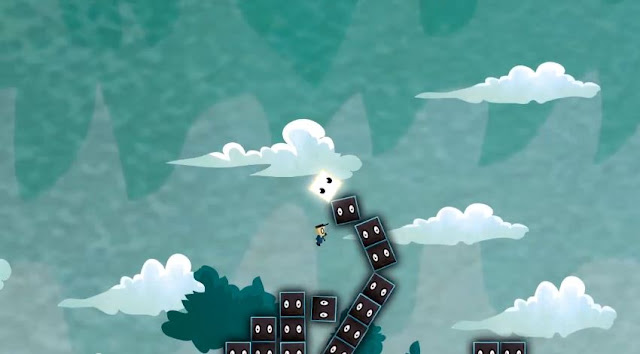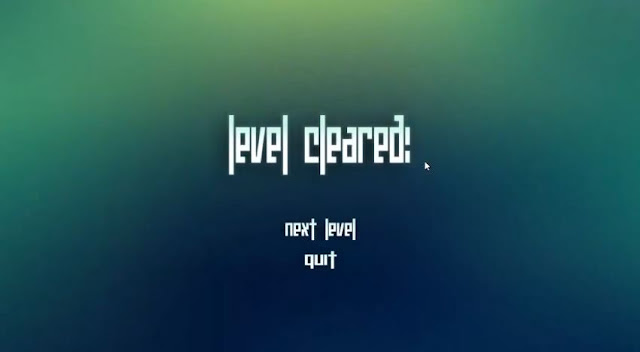What was it like to Develop Destony and how were the Results?
Things are coming to a close and it's time to reflect on the whole process and development of my honours project. From what started as a simple idea has now come to fruition in a final developed game concept. In general, developing Destony was an educational and growing experience, one of which I feel I gained a substantial amount of knowledge and skill. The results were far more than I expected, having no coding experience I went in scared of ending up with nothing to show, although I managed to create a polished game with 4 levels, including an intro and an ending.
Table of results for Destony
Excerpt from Dissertation:
Project Practice:
As aforementioned in the methodology, an interactive game,
namely: Destony would be created with
the purpose of incorporating the theories, principles, trends and information
on game aesthetics focusing on the core systemic and visual values. The result
of this was the created game aesthetics critical framework, and due to the
systemic success of Thomas was Alone
and the visual value of Tiny Wings, a
lot of the core aspects of both games were fused into the creation of this
game. As with Thomas was Alone, this
would focus more on the polish of a simple concept, rather than an unrefined
complex one, focusing on the feel and narrative immersive qualities.


As a single
developer with an artistic background, the gameplay design was minimal,
consisting of a single jump mechanic and the interactive physics to move your
surroundings and collect items. The game’s focus was on creating a compact
experience which would represent the significant aspects of the systemic and
visual, rather than creating a full game within the timescale. To incorporate
the balance of challenge, small puzzles were incorporated to keep the users
interest. To include freedom, the physics were enabled so that the blocks could
be moved around and be unpredictable. The retention was sought after through
collecting items as was the value. The immersive and feel qualities of the game
were to do with the visuals of the character, the animations and subtle
attention to detail.
The game was previously developed in flash a 2D engine, but
was then recreated within Unity for the flexibility and the in more appropriate
physics engine. During development, many decisions needed to be made for the
betterment of the gaming experience. One of the first decisions that were
encountered was whether the game would be 3D with a fixed front view (2.5D) or
just 2D planes with a fixed front view. It was soon established that having 3D
blocks moving around without certain axis restraints would over complicate the
game and also impact the effectiveness of the puzzles, so it was concluded that
2D planes with a fixed frontal view would be the best course of action.
As it often is with game development, many technical issues
were encountered and addressed. The walk cycle would glitch every time you walk
for more than a second, which was fixed by changing the number of runs the
cycle would make per second. A fundamental problem which took a great amount of
time to fix was when the Javascript for a collision code for the light box
would not work, although a similar code would function within the game in C#.
Another problem was that the characters collision sphere would not collect the
item which was fixed by creating a box instead of a sphere.
Largely, although some problems were encountered, the
project practise and implementation was carried out and established as planned.
Inevitably, originally planned features were cut out and not all issues were
solved to perfection, although the purpose was not to create an immaculate
product but to create an aesthetic design experience which could test and bring
further practise based insight into the balance of systemic and visual
significance.
Destony Evaluation
Destony, like the previously researched games is created by
a single developer. The game is an atmospheric puzzle platformer with a very
strong focus on story and feel. You play as a postman named Tony who previously
died in a bus accident and his spirits was released in order to help those
struggling with negative thoughts in their lives and help them fulfil their
destiny. As you dive into their private subconscious, you can see all the
blocks of negativity stored in their minds and can assist them in clearing out
the negative blocks and collecting the positive blocks to progress through the
game. As you progress throughout the game, the puzzles progressively become
more difficult and if you don’t catch the positive block before it hits the
ground, the fragile positivity fades away.
This game, although short and very basic, holds a core
sense of systemic worth and the art style really creates a sense of intrigue
and wonder. The mechanic of jumping and pushing blocks out the way, although
minimal, holds a substantial pleasurable response. The narrative of the game
creates a sense of urgency and mission within the game as progress and tread
carefully on the path to fulfilling your goals.


Challenge 4/5: The
balance of skill and challenge is amply accomplished with the playful nature of
exploration and experimentation. The physics of the game create quite a
challenge as your goal of reaching the positive blocks without letting them
fall and can sometimes require skill and planning. The game can be contently played
as time flies by as you find joy in jumping around and accessing one positive
block to the other. Although it being a prototype, the sense of challenge is
certainly not in full bloom and more features could be added.
Freedom 4/5: The
game allows you to have a certain level of creative freedom to explore and
effect your environment differently each time you touch the blocks from a
different angle, velocity or even height and allows the player to define their
own outcome. You are able to move around freely around the environment and
there are no time restraints, although you are only limited to jumping. Despite
this, the mechanic is pressure sensitive and requires certain jump heights to
pass certain areas of the game.
Retention 3/5: The
game has enough content and story to keep the player engaged and content within
the prototype. The freedoms to explore and effect your environment have quite
an addictive nature all throughout the game. Each time you fail to collect the
certain blocks, you are motivated to try and try again until you succeed.
Although the game can become slightly repetitive when you collect blocks which
are too easy again and again as well as the game lacking depth within the
content and the amount of levels.


Immersion 4/5: The
story creates an emotive vibe which is translated from the start of the game as
you progress throughout. The visuals have a really vibrant and soft nature to
them which draws the user within the experience. The world that is created has a
really psychedelic dreamlike feel to it and when playing, you can get a sense
of magical fantasy. The immersive qualities could be further expanded with more
polish to the story, although after seeing the cut scene of the game and
understanding the story, you begin to feel a connection with the purpose of the
experience.
Value 4/5: The
game manages to balance the rewarding system very well. As you play throughout
the game,
you know that collecting 3 white blocks will bring you to the next
level, each block you collect gives off a satisfying spark and make you feel
you are progressing throughout. The general sense of the game is very pleasing,
from the visuals, music to the polished jump, you feel that the game has had a
lot of consideration put into it. There are also some small glitches with the
re-spawn and game over screen which can slightly dampen the experience. Once
you complete the game you are left feeling that it was too short being a
prototype, and having more features and varied levels would create further
value, although there is certainly much value within the game.


Feel 4/5: The
feel is familiar to many early platformers, it’s a simple and barebones
experience, although the simplicity maintains a sense of polished influence
throughout. There is a certain amount of harmony in regards to the character,
blocks and environment; the characters have box shaped body, although there is
harmony within the spherical look within the eyes which unite well with the
clouds and rounded aspects of the environment. Overall, the game has quite a
unique feel in comparison to other platformers, one of a certain polish which
certainly could be expanded on for an even more pleasing overall experience.
RATING
|
|
CHALLENGE
|
4
|
FREEDOM
|
4
|
RETENTION
|
3
|
IMMERSION
|
4
|
VALUE
|
4
|
FEEL
|
4
|
TOTAL (Mean)
|
3.8
|
Table of results for Destony
In assessing all the factors of Destony, it is apparent
that a lot of the game aesthetics are clearly well thought out and executed and
incorporate prior research of successful games. The challenge, freedom,
immersion, value and feel all score a high rating due to the certain level of polish created within several aspects of the game. The story, the art style, the programming of the simple jump mechanic are all done with meticulous attention to detail which potentially separate this game from other traditional platformers. The incorporation of physics and the innovative concept of collecting fragile blocks bring great prominence within the aesthetic experience of the game.
Although, to its detriment, it is also evident that it is a
prototype and not a finished game. The retention factor suffers due to the
certain lacking features such as a limited amount of levels, small glitches and
program heavy features due to it being created by an artist. Despite these
drawbacks, the game is certainly a well thought out prototype with much
potential and values the majority of the elements presented within the
framework.







No comments:
Post a Comment